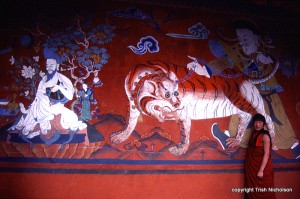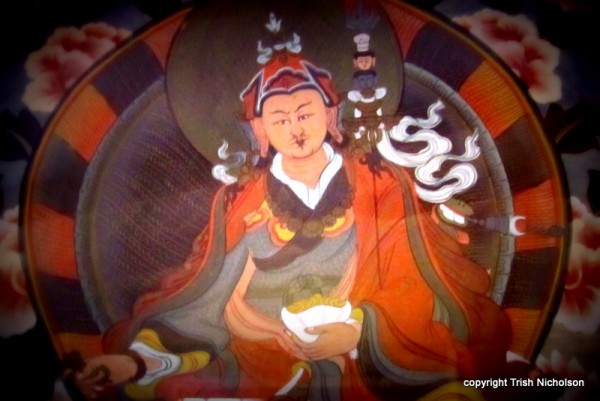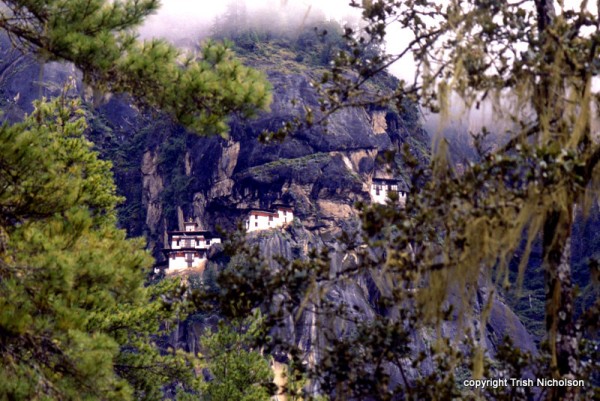 Bhutan has tigers in its southern jungle. You might even see one if you visit a wildlife park there, but this tiger is legendary.
Bhutan has tigers in its southern jungle. You might even see one if you visit a wildlife park there, but this tiger is legendary.
The great 8th century Guru, Padmasambhava, is said to have brought Tantric Buddhism to Bhutan, travelling there on the back of a flying tiger. Padmasambhava, also known as Guru Rinpoche (‘Precious Teacher’) is a Bodhisattva: an Enlightened One who could be in a state of Nirvana, enduring no further rebirths, but who voluntarily undergoes further reincarnations to help others also achieve Enlightenment.
The flying tiger brought him to the narrow ledge in a cliff, 3,000 feet above a gorge – the present site of Taktsang Monastery, whose name means ‘Tiger’s Den’, or ‘Tiger’s Nest’. According to the legend, Padmasambhava first lived in a cave nearby, teaching his followers from the sacred scripts he brought with him. There are still many caves and tiny hermitages in the side of the mountain.

Like all myths and legends, this story contains important truths. To some Buddhist sects, Padmasambhava is a second Buddha. His name in Sanskrit means ‘Lotus Born’, which some interpret as a miraculous birth, but ancient written records show that Padmasambhava was an Indian scholar studying at the Buddhist University at Nalanda.
In the year 757 AD, the King of Tibet invited Padmasambhava to bring his Buddhist teachings to Tibet, which he did, founding the famous Samye monastery there 20 years later. In those days, migrants and traders travelled frequently between Tibet and what is now Western Bhutan, bringing their language and customs with them. It is quite possible that Padmasambhava made that journey before written records of him cease in 804 AD. And I like to think the ‘flying tiger’ was the passion of his vocation.

“We are climbing up the mountain that adjoins the sheer cliff on which Taktsang is built. All the way up we have had distant views of the monastery: white specks way above us that appear to hover in mid air in swirls of morning mist – a hallucination rather than a destination, it looks impossible to reach.”
Excerpt from: Journey in Bhutan: Himalayan Trek in the Kingdom of the Thunder Dragon

Thank you for this Trish, I was keen to know why it was called the ‘Tiger’s Nest’. This has to be one of the most striking monasteries on the planet, and it must thrill you to know that you have visited it.
Warmest
Rob
Delighted you came to visit and comment, thank you Rob. I wasn’t sure if you already knew the reason. It is one of those ‘magic moments’ in memory and I can transport myself there, again, quite easily.